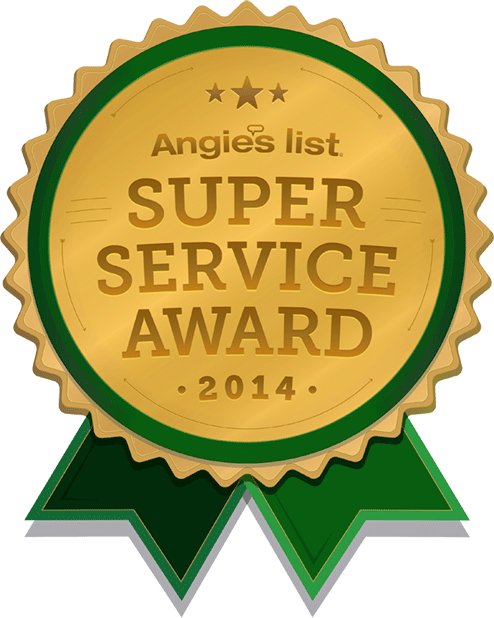Eight Steps for Cleaning Your Vinyl Fence

Vinyl fencing can offer superior longevity with minimum upkeep. Without regular cleaning and regular maintenance for your vinyl fencing, though, you may be compromising both the lifespan and look of one of the most prominent components of your home’s landscaping.
Fortunately, you can keep up your curb appeal with these eight steps for cleaning your vinyl fence:
- Identify the Source of Your Fence Stains
- Determine How Dirty Your Fence Is
- Select Your Perfect Cleaning Solution
- Pick the Right Tools for the Job
- Protect Your Plants
- Test a Small, Inconspicuous Area First
- Consider Fence Protection
- Think Prevention, Not Treatment
As with most home maintenance projects, the key here is to consistently keep up with the cleaning to prevent any lasting damage. Read on to get an in-depth guide on the dos and don’ts for keeping your vinyl fence looking great for many years (or decades) to come.
1. Identify the Source of Your Fence Stains
Despite its renowned durability, dirt, grime, and stains on your fence are inevitable no matter where you live. In general, vinyl fence stains can be traced back to some common causes:
- Sun damage
- Water stains from sprinklers
- Dirt and dust blown by the wind
- Falling pollen
- Mold, algae, and mildew
- Grass clippings
Knowing the source of your fence stains will help you identify where they’re likely to form, when they may become worse, and how to best treat them. All fence stains are not equal, so you want to ensure you’re picking the right cleaning method for each one.
2. Determine How Dirty Your Fence Is
A good rule of thumb for any cleaning project is to only use the bare minimum cleaning method required to complete the job. If you go overboard on a relatively minor stain, you’ll risk damaging your fence, fence finish, and surrounding home and landscaping. In fact, Reader’s Digest dedicated an entire article to cleaning products that you may be using wrong in and around your home.
If your vinyl fence only appears to have a light coating of dirt and grime, opt for a gentler cleaning method and skip the harsh chemicals. You probably won’t need to spend as much time physically scrubbing your fence either. Particularly on newer fencing, a simple garden hose spray may be all that’s necessary.
3. Select Your Perfect Cleaning Solution
Once you determine the type, source, and extensiveness of the foreign material clinging to your fence, you can pick the proper cleaning solution. You may be surprised at just how little you'll need. Below are the most common fencing cleaning solutions in increasing order of strength:
- Water (no solution necessary)
- Dish soap
- White vinegar
- Bleach
- Outdoor cleaning solutions designed to kill mold, mildew, and algae
Worried about your impact on the surrounding environment? Bob Vila offers a few tips on selecting “green” cleaning products and techniques that will have fewer negative consequences on your home and the environment.
4. Pick the Right Tools for the Job
Along with picking the correct cleaning solution, you need to know all of your tool options for bringing your dirty fence back to life. Again, these cleaning methods range from mild to major, depending on your needs:
- Garden Hose: As the softest, gentlest method for cleaning, try hosing off your fence first, before moving to stronger methods.
- Cloth or Towel: Using an old towel, cloth or rag is an easy way to apply your cleaning agent of choice and gently work it into the surface of your fence.
- Stiff Bristle Brush: For more stubborn stains, buildup, and growths on your fence, a stiff bristle brush can break loose the grime and help the cleaning solution permeate the stains.
- Textured Sponge or Scrubbing Tools: Sponges and textured scrubbing tools, such as the popular Magic Eraser, can add friction and cleaning muscle that transforms the appearance of your fence.
- Pressure Washer: When a hose just doesn’t pack the punch you need, a pressure washer can make light work of the dirt clinging to your fence. Just start at the lowest setting so you don’t end up damaging the vinyl.
5. Protect Your Plants
An important step in cleaning your fence is protecting the vegetation around it. SFGATE offers several important tips for banishing fence dirt and stains without punishing your plants:
- Stick to water when possible. Whether from your hose or a low-powered pressure washer, you can be sure you won’t be poisoning your plants.
- Scrub stubborn stains with a mild detergent.
- When diluted, chlorine bleach can be safely used to clean your fence. Try leaving it on there for the best results.
- For those times when you must choose stronger chemicals that will hurt plants, lay down a plastic sheet barrier to protect them from dangerous runoff.
6. Test a Small, Inconspicuous Area First
Until you try it, you never know for certain how a particular material will react to cleaning. Before you start cleaning the front and center part of your fence that faces the street, test your cleaning method at the back, where potential damage won’t be as visible.
This is particularly good advice when attempting to scrub away stubborn stains. Whether you’re applying significant pressure through water jets or scrubbing, or you’re using a new cleaning solution, the last thing you want to do is try out this fix right in front of your home.
7. Consider Fence Protection
Although vinyl fencing is highly durable, it can still become damaged. Rocks and other debris can be propelled out during mowing, so this is something you want to watch out for. Storms and falling tree limbs can also put serious hurt on your vinyl fence.
While you can’t prevent many of the common sources of fence damage, there is one you can address: weed eaters. Believe it or not, trimmers can cause significant damage to the base of your fence over time. To prevent chipping, cracking, and nicking, consider installing post guards. Most fences are installed high enough for you to cut the grass below. However, post guards will protect this part of the fence that extends into the ground.
8. Think Prevention, Not Treatment
Once a thick layer of mold or mildew takes hold, it can be difficult to pry it off of your lightly-colored vinyl fence. Instead, BobVila.com recommends that you regularly spray off your fence, around once a week, to keep any potential growth at bay. This is particularly true after mowing, when grass clippings may blow onto your fence.
Every few weeks, you can include a mild detergent to your cleaning routine. This regular cleaning should prevent those ugly growths that turn your pristine white fence into an eyesore. Plus, you can avoid the use of heavy cleaning solutions and scrubbing that are required after months of neglect.
Conclusion
Although vinyl fences offer many significant benefits, including durability, longevity and ease of cleaning, they do require some care. However, investing a little time and attention in your vinyl fence today will pay off tomorrow. Regularly cleaning your fence with the simple steps above will help protect it and extend its life.
Mon-Fri: 8am-5pm • Sat-Sun: Closed
Financing, Cash, Check & All Major Credit Cards
License: FL CBC Lic. #1263682
4385 Independence Ct,
Sarasota FL 34243




